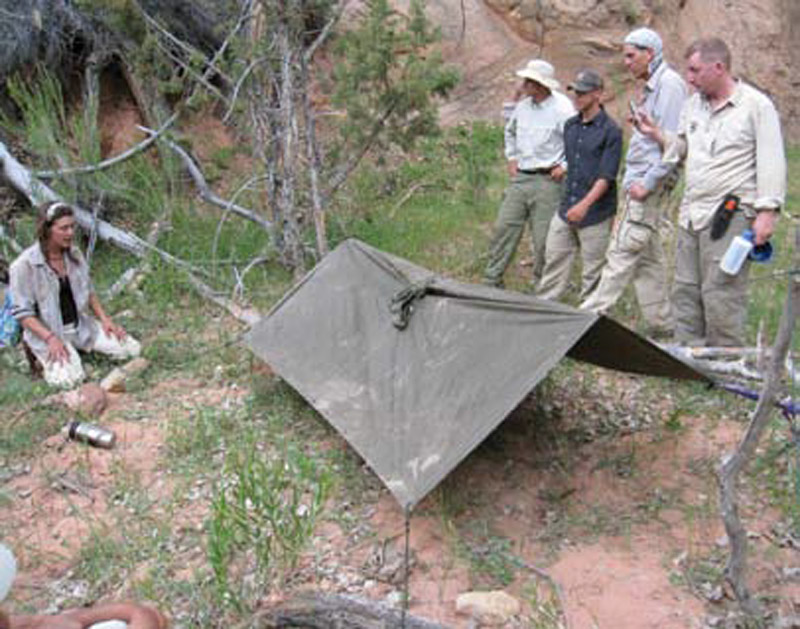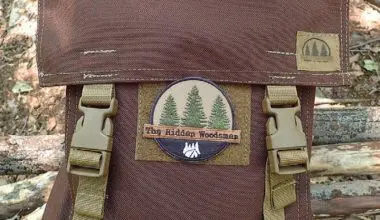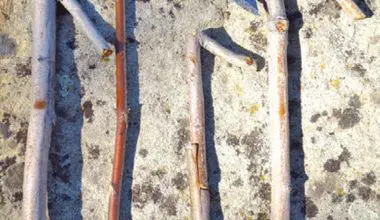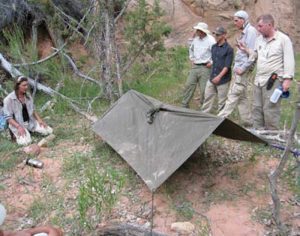
They were just fun things to do. They didn’t become “extreme” until some clever marketing firm coined the term and used it to sell gear.
Likewise, backpacking, fishing, hunting and trekking through the woods were just normal activities for us. Spending time outdoors did not have a sexy label like “survival” or multiple television shows promoting it. Now that survival seems to have eclipsed extreme as the marketing term of the day, it can be very difficult to decipher which survival training programs are genuine.
All my survival training was with the Boy Scouts of America and from knowledge passed down through my family. In recent years, I have been trying to fortify my skills in preparation for medical trips to dangerous places. I have been very lucky twice. My first trip was to the Amazon jungle with Randall’s Adventure & Training, and it did not disappoint. Then I researched desert survival and found the Boulder Outdoor Survival School (B.O.S.S.).
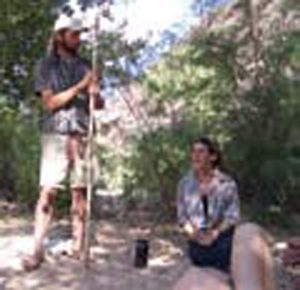
B.O.S.S. was founded in 1968 by Larry Dean Olsen, author of Outdoor Survival Skills. Located in Boulder, Utah, the school was started as a way to challenge students on academic probation at Brigham Young University. The original courses lasted 28 days. Today, B.O.S.S. offers a variety of courses ranging from three to 28 days.
Then as well as now, students carry no tents, sleeping bags, stoves or backpacks. In fact, the list of equipment allowed is much shorter than the list of banned items. Students enter the wilderness with little more than a knife, blanket, poncho and the clothes on their backs. Drawing on knowledge from native cultures around the world, the B.O.S.S. philosophy is to know more and carry less.
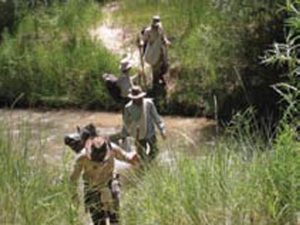
The primary strength of B.O.S.S. is the diverse and dedicated staff. Composed mostly of college-educated individuals in their 20s and 30s, staff members live the primitive lifestyle they teach— some have been doing it for over ten years. My guides were excellent teachers, able to break complex skills down into individual components. It’s no surprise that many B.O.S.S. alumni and staff go on to lead highly successful lives. B.O.S.S. CEO Josh Bernstein is the former host of The History Channel’s Digging For The Truth.
I signed up for the Seven-Day Field Course. I was accompanied on the trip by eight other students and guides Lori Jonestrask and Steve Dessinger.
Table of Contents
IMPACT PHASE
The first phase of our course, Impact, started after a late afternoon van ride into the desert. We set off on a fastmoving hike with one liter of water, no food and no gear. After hiking well into the night, we reached the stopping point and our guides split and left us to fend for ourselves. We slept on the ground under the stars. It was a night of hard-learned lessons.
The first lesson was that sand wicks body heat away, so it’s wise to sleep on a layer of insulation. I instinctively laid down under a tree, where the ground was covered with cast-off needles and debris. I made a lucky choice, but I was still very cold.
The second lesson was that it is best to cast aside social conventions and share body heat with someone else.
By morning, all of us were out of water, so we hiked up a dry streambed until we found a puddle. After drinking our fill, we set off on a grueling hike that lasted well into the heat of the day. I was shocked at the fitness exhibited by our guides. Lori, who could not have weighed more than 130 pounds, hiked all day, up and down mountains, and carried a heavy pack wearing only homemade sandals. She never seemed to break a sweat.
The rest of us, however, were a different story. Dehydrated and exhausted, we stopped in the shade for a siesta. When the sun started its retreat and the air cooled somewhat, we walked several more miles to a cave. We were reunited with our gear and overjoyed to feast on a banana. It was the first food we had seen in 30 hours.

GROUP EXPEDITION PHASE
The Group Expedition Phase started after a comfortable night in the cave. During this phase, we were given instruction on navigation, fire, shelter building and food preparation. I was surprised to learn that green sage cut directly from a live bush is the best material for making a fire board and spindle. Navigation turned out to be much more difficult than I had envisioned. I found it challenging to correlate what I was seeing with the information on a topographical map. Water is very difficult to find and almost never where you are expecting it.
After a long day of hiking, we set up our shelters at dusk. While we were doing so, student Kevin Mesecher got a fire going. We had lentil stew for dinner— our only hot meal of the trip. At daybreak we were taught a method of minimizing the impact of our fire. After another long day of navigation and hiking, we rested briefly on the Escalante River. Then we spent more time honing our fire-making skills.
SOLO PHASE
Late that afternoon, we began the Solo Phase of the course. Each of us was walked to a separate campsite where we would spend the next 24 hours. For many of us, the hardest part of the Solo Phase was waiting to be picked up. I spent my time carving a spoon, perfecting my bow drill set, and taking photographs. Some students were lucky enough to have petroglyphs to study at their sites. After what seemed like an eternity, Steve signaled us to gather at the meeting place. Steve and Lori congratulated us on completing the Solo Phase and left us alone to begin the Student Phase of the course.
STUDENT PHASE
We spent the next day navigating the Escalante River Canyon until we found the cave where Steve and Lori were to meet us. We counted 16 river crossings along the way. The cave was a nice place to relax during the heat of the day. We passed the time playing games. A particularly popular game involved throwing pebbles at student Adam Medoro’s underwear, which was drying on a sage bush some distance away. As the sun was setting, Steve collected us for another hike.
After a brief dinner, we began the Final Challenge Phase of the course.
FINAL CHALLENGE PHASE?
One of the many strengths of the course was that we were always kept guessing, much like I would expect in a real survival situation. I will not reveal the details of the Final Challenge because I don’t want to ruin the surprise. Suffice it to say that I finished the course dehydrated, wobbly, blurry eyed and completely spent. I was then led to my first experience in a sweat lodge. It was an exquisite end to an outstanding adventure.
I give the Boulder Outdoor Survival School my highest recommendation.
